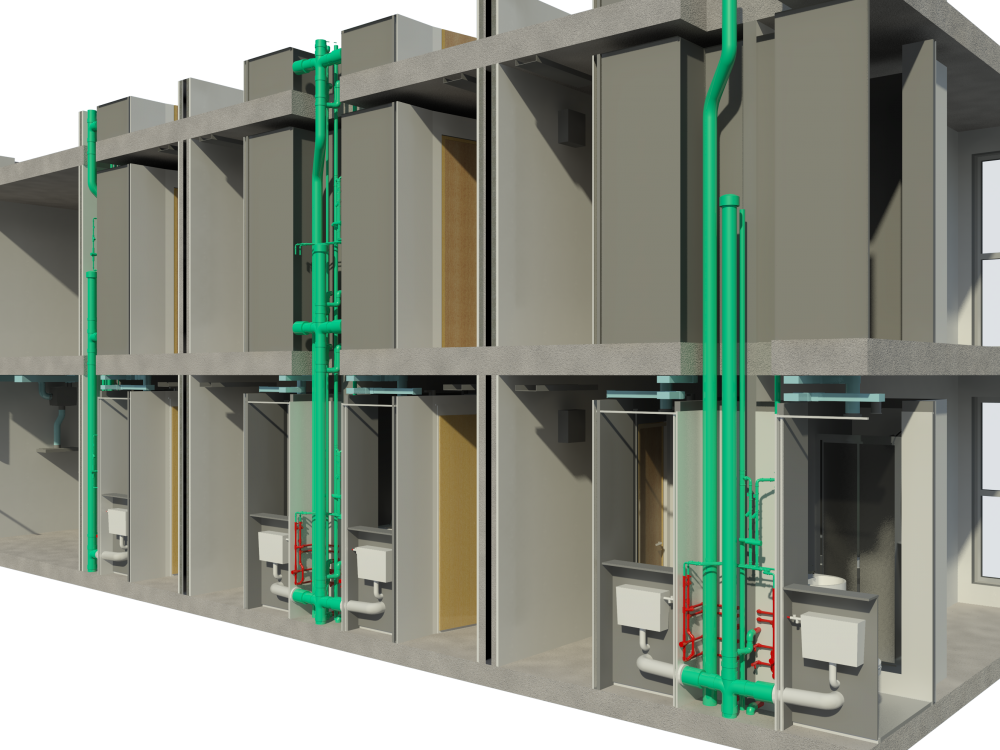COBie is the acronym given to the international standard for building data exchange – its full title is Construction Operations Building Information Exchange. The COBie specification captures industry best practice and is most commonly used in the product data handover process between the construction firm and the facility management team. However, it is important to remember that the COBie standards do not dictate what information should be contained within the COBie file, and so the responsibility for asset information still lies with the owner.
The COBie data model is part of the buildingSMART data model, which is more commonly known as the IFC (Industry Foundation Class). COBie is also part of the openBIM movement which aims to foster support for the collaborative design, construction and operation of buildings. It is also part of the building information modelling (BIM) Level 2 initiative.
The most common way in which construction companies will interact with COBie is through the COBie spreadsheet, but the data can be presented in a variety of different ways according to the needs of the owner and the specific operations maintenance and asset data transfer. COBie standards focus on the format and structure of the data and so the template is used as a starting point for defining and fulfilling the information exchange requirements.
The History of COBie
The handover of maintenance and asset management data has always been a bit of a struggle in construction, as this sort of information is only part of use to operations and it also means that a lot of documentation has to be produced and collated. This is one of the reasons why this sort of work has traditionally been put off until the end of a project when the budget limits have already been reached and the project deadline is looming. The information was presented as paper files and drawings in binders, whereas now we have moved towards presenting the information digitally using CD-ROMs and memory sticks.
More project owners and facility managers are now using Computerised Maintenance Management Systems (CMMS) and Computer-Aided Facility Management systems (CAFM) to help them operate, maintain and manage the completed building. In order to complete their daily tasks, however, they need to have information about the building and the equipment they will need so that they can plan maintenance schedules accordingly. The issue with this is that although information may be available digitally, it is usually locked down in PDF format. This means that when the maintenance manager is setting up the CMMS or CAFM system they have to spend time finding the operating instructions and maintenance schedules, and then copy the data into the system or link out to it.
As a way of overcoming this obstacle, many owners, handover consultants and CAFM vendors have produced templates to help capture this data in a more structured way. This, however, requires contractors to enter information such as the supplier, the serial numbers, the spare parts lists and so on. This has helped to improve CAFM systems as well since it allows this data to be more easily imported. However, on the flip side of this, it also means that most owners, consultants and vendors will have their own template which means contractors and subcontractors have to learn about the different templates each time they start a new contract as there is no common interface at the moment. These are all issues that COBie is trying to address.
Basic Principles of COBie
At the core of COBie are three basic principles:
- Classification system. This is a key foundation for COBie although the system used is up to the owner. Using a classification system helps users to navigate the information more easily and also brings with it the possibility of aggregation across projects.
- Data model. As we have mentioned above, COBie is aligned with the buildingSMART open IFC model meaning it shares good practice across the sector. It also means that integrating design tools and construction processes will become easier.
- Delivery format. Users of COBie have the option to see the information in a variety of different delivery formats including standard IFC ones. They also have the option to use a spreadsheet-based data collection and delivery format as well. This allows participation in an openBIM workflow even if you don’t have access to a BIM model view or have any knowledge of the IFC data model.
COBie in itself is a very simple concept which is why many BIM companies were quick to adopt it, although its adoption in the construction industry as a whole has been much slower.
If you have any BIM requirements that you think The CAD Room team can help with, then please get in touch. You can call us on 0161 427 0348 from Monday to Friday, or alternatively email us at office@thecadroom.com.

